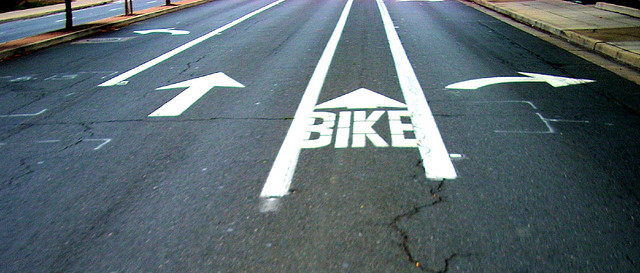In November 2013, The New York Times contributor Daniel Duane wrote the editorial, “Is It O.K. to Kill Cyclists?” which discussed the disharmonious relationship between bike riders and motorists.
Duane, who does not believe it is O.K. to kill cyclists, wrote about his experiences cycling in San Francisco, and how many people do not ride their bikes simply beca use they fear for their lives. Duane wrote:
use they fear for their lives. Duane wrote:
“Registering for a triathlon, I took my first ride in decades. Wind in my hair, smile on my face, I decided instantly that I would bike everywhere . . . within minutes, however, I watched an S.U.V. hit another cyclist, and then I got my own front wheel stuck in a streetcar track, sending me to the pavement. I made it home alive and bought a stationary bike trainer and workout DVDs . . . Then I called my buddy Russ, one of 13,500 daily bike commuters in Washington, D.C. Russ swore cycling was harmless but confessed to awakening recently in a Level 4 trauma center, having been hit by a car he could not remember. Still, Russ insisted I could avoid harm by assuming that every driver was ‘a mouth-breathing drug addict with a murderous hatred for cyclists.'”
Duane’s experience summed up how many other people in his life felt about biking: cycling on busy, city streets is dangerous and not worth the risk to your life. Much of Duane’s article focused on unfortunate anecdotes of cyclists being hit or killed by motorists—motorists who did not receive so much as a ticket. Even in situations where the motorist was cited by police, tickets were reported for as little as $42. Over and over again, drivers were hitting cyclists and remaining on the scene. When cyclists ended up in the hospital or died on-site, the drivers were never prosecuted. In many cases, because the motorists were not drunk and were not considered to be driving “recklessly,” they were assigned no fault in the accidents.
Duane wrote:
“There is something undeniably screwy about a justice system that makes it de facto legal to kill people, even when it is clearly your fault, as long as you’re driving a car and the victim is on a bike and you’re not obviously drunk and don’t flee the scene. When two cars crash, everybody agrees that one of the two drivers may well be to blame; cops consider it their job to gather evidence toward that determination. But when a car hits a bike, it’s like there’s a collective cultural impulse to say, ‘Oh, well, accidents happen.'”
While Duane actively stood up for the rights of cyclists, he also did not place all the blame on vehicles and their drivers. He discussed the roles both drivers and cyclists play in causing traffic accidents, and explicitly asked those on bikes to start following every single driving law:
” . . . Nor does it help that many cyclists do ignore traffic laws. Every time I drive my car through San Francisco, I see cyclists running stop signs like immortal, entitled fools. So I understand the impulse to see cyclists as recreational risk takers who deserve their fate . . . So here’s my proposal: Every time you get on a bike, from this moment forward, obey the letter of the law in every traffic exchange everywhere to help drivers (and police officers) view cyclists as predictable users of the road who deserve respect. And every time you get behind the wheel, remember that even the slightest inattention can maim or kill a human being enjoying a legitimate form of transportation.”
Whether or not you agree with Duane, cyclists and motorists have an equal responsibility to keep each other safe on the road. Because cars are larger, more powerful, and more protected than bicycles, cyclists will almost always suffer the brunt of any collision and receive more severe injuries than motorists in the event of a crash. Drivers need to be extra aware when traveling near cyclists; cyclists need to obey all traffic laws and make their presence obvious to drivers.
Photo Courtesy of Richard Masoner/Cyclelicious and Creative Commons.
